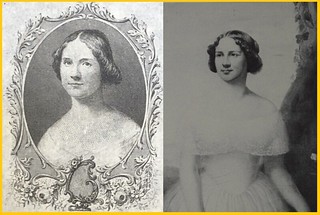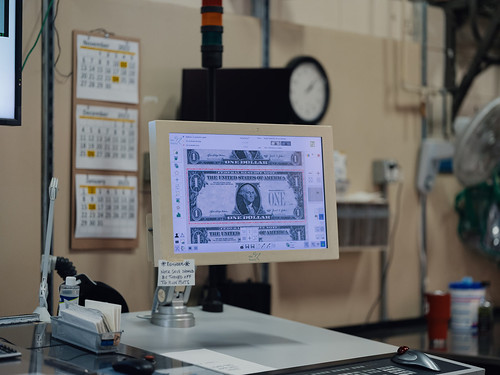
Here are some additional items in the media this week that may be of interest.
-Editor
How Coins Brought About Democracy
This article from The Economist explores the connection between ancient coinage and democracy. Found via The Explorator newsletter. To subscribe to Explorator, send a blank email message to:
explorator+subscribe@groups.io.
-Editor
 In the view of many, money corrupts democracy. In the view of Francis Albarède, however, it was money, in the form of coined silver, which created democracy in the first place.
In the view of many, money corrupts democracy. In the view of Francis Albarède, however, it was money, in the form of coined silver, which created democracy in the first place.
Dr Albarède is a geochemist at the École Normale Supérieure in Lyon, France. His definition of geochemistry stretches, however, well beyond many people's, into political and economic history. In particular, he has just finished running the European Research Council's silver (Silver Isotopes and the Rise of Money) project. This, by studying the isotopic composition of ancient silver coins, has tried to draw conclusions about where the metal in a coin was mined, and thus about patterns of trade.
To read the complete article (subscription required), see:
Newfangled coins and mercenaries may have brought about democracy
(https://www.economist.com/science-and-technology/2023/03/08/newfangled-coins-and-mercenaries-may-have-brought-about-democracy)
When Jenny Lind Circulated in America
Here's a Society of Paper Money Collector's blog article by Loren Gatch on banknote portraits of Jenny Lind, the famous opera singer known as the Swedish Nightingale.
-Editor
IN HER STUDY of women on currency, Virginia Hewitt observes that almost all women on notes are personifications or idealizations, even when they appear in realistic form. As the use of paper money became widespread in the 19th century, advances in engraving technologies enabled banknote printers to resort to finely-wrought human portraits as a measure to thwart counterfeiting. Drawing on all manner of wash drawings, lithographs, and later photographs, banknote engravers in the mid-19th century created stocks of portrait images, known as fancy heads , that their clients could choose from to adorn their currency. Key to the usefulness of those portraits was their widespread recognition by the banknote-using public, who might have the perceptive capacity to distinguish between well-executed renderings of famous portraits on genuine notes and badly-done portraits on counterfeits. Given that men dominated public life, historical figures portrayed on American banknotes were, almost without exception, male. Women appeared on currency for the most part either in stylized and anonymous depictions of daily work life or as personifications of some ideal or virtue, typically garbed in robes evocative of classical antiquity.

One singular exception to this pattern can be found on this sight draft issued on the firm of Sisson & Chapman, a small private bank that operated between 1850 and 1856 in the town of Lyons in the western part of New York State. If the top right of the draft features a characteristic arrangement of allegorical figures looking away in languid self-absorption, the portrait to the left makes an entirely different impression. Wearing a simpler, period hair style and plain dress, the young woman directly meets the gaze of her onlookers with her own forthright yet demure regard. Lacking exotic raiment or any particular beauty, her countenance is prim rather than glamorous, her overall appearance bourgeois rather than aristocratic.
 Anyone receiving this bank draft, and probably a large swathe of the American public by the early 1850s, would have immediately recognized this portrait as that of Jenny Lind, the famous opera singer known as the
Anyone receiving this bank draft, and probably a large swathe of the American public by the early 1850s, would have immediately recognized this portrait as that of Jenny Lind, the famous opera singer known as the Swedish Nightingale. Embarking in late 1850 on a performance tour of the United States under the management of the impresario Phineas T. Barnum, Lind's presence in the country for nearly the next two years unleashed a storm of adulation, referred to at the time as Lindomania , that represented an early example of how a mass popular culture, even one grounded on an egalitarian ethos like the United States, could nonetheless generate extreme forms of celebrity worship.
To read the complete article, see:
When Jenny Lind Circulated in America
(https://www.spmc.org/blog/when-jenny-lind-circulated-america)
How the BEP Prints Money
The New York Times published a great report (complete with video) on the making of paper money at the Bureau of Engraving and Printing. Here's a short excerpt - be sure see the whole thing online. Thanks to David Sundman for passing this one along.
-Editor
 The process of making money requires teams of experienced designers and engravers who etch the plates with portraits, vignettes, lettering and ornamentation. The designs are crafted with both aesthetics and security in mind.
The process of making money requires teams of experienced designers and engravers who etch the plates with portraits, vignettes, lettering and ornamentation. The designs are crafted with both aesthetics and security in mind.
A tool called a pantograph, which has been used for more than a century, scales the engravings so that they can fit on working plates and in smaller sizes and printed on the notes that are exchanged around the world.
Currency redesigns can take many years, except when a new Treasury secretary takes over. The new signature is usually added in a matter of months, beginning with a ceremonial signing that is captured digitally and engraved onto the metal plates that are the primary building blocks for printing the bills.
Printing presses require a set of three to four metal plates, which take up to eight days to produce. The images are transferred to the plates using what are essentially giant cookie cutters, known as steel dies. Then the plates must be cleaned and polished.
To read the complete article, see:
HOW TO PRINT MONEY
(https://www.nytimes.com/interactive/2023/02/26/us/printing-money-treasury.html)
Wayne Homren, Editor
The Numismatic Bibliomania Society is a non-profit organization
promoting numismatic literature. See our web site at coinbooks.org.
To submit items for publication in The E-Sylum, write to the Editor
at this address: whomren@gmail.com
To subscribe go to: https://my.binhost.com/lists/listinfo/esylum
Copyright © 1998 - 2024 The Numismatic Bibliomania Society (NBS)
All Rights Reserved.
NBS Home Page
Contact the NBS webmaster
| 





